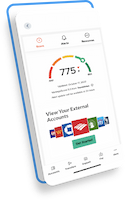From Pre-hire to Employment
Like many businesses, in the last year we’ve had to learn and master a new system for operating during a global pandemic: remote recruiting and onboarding. In May, we had 118 employees. By the time this publishes, we’ll have 225 people onboarded – so we’ve more than doubled our staff in eight months. We didn’t think we could onboard this many people purely remotely before we did it. And as remote work seems to be here to stay, at least in the first half of 2021, now is a good time to look at what we’ve learned and where we’re going.
The biggest pivot in our hiring strategy was not limiting our talent pool based on location and, now that we realize that we can do it, have found it actually makes more sense to hire remotely rather than bringing everybody into an office and have them onboard live in person.
Our digital hiring strategy is focused—but not necessarily in terms of location. We focus the majority of our efforts on LinkedIn and team member referrals. We’re not big fans of what I like to call the “post and pray” websites, where you post job descriptions and get all types of resumes. We have an incredible talent attraction team who are really skilled at finding “passive candidates” (candidates who aren’t necessarily pursuing a new job but they have all the background experience and key skill sets that we’re looking for), then contacting them proactively, and introducing Quontic Bank and presenting the opportunity.
Going into the global pandemic, the unemployment rate was extremely low and very competitive. A lot of the hiring is on the mortgage side of our business. Most mortgage companies are growing quickly and in the mortgage world (from a talent attraction perspective) it is still incredibly cutthroat. So we present Quontic as a destination employer that offers some of the best benefits and compensation in the industry (but more on that in another blog post.)
Hiring people remotely means we have to train remotely. Our mortgage ops leadership has done an unbelievable job onboarding all of these new employees. We’re beginning to use online content for skill training. Of course, it doesn’t tell you how to underwrite a mortgage at Quontic, but we’re developing that and prioritizing e-learning in 2021.
As new, remote employees get accustomed to their role, there are a few things leadership needs to get right.
- – Effective and frequent communication is key. From pre-hire all the way through the employee lifecycle (and certainly in that time frame leading up to their first day), make sure that you’re communicating with them. Make sure that you’re continuing to explain to them why the company exists, the role they’re going to play in that company, and creating lots of touch points between them and the hiring manager, the recruiter and HR.
- – Be extremely transparent with what’s going on in the organization and the decisions being made. When the pandemic started, we began hosting weekly all-company meetings where we would cover a myriad of things, including the health of the business, what is and isn’t going well within the organization, the management team’s thoughts, navigating a global pandemic, asking about employee needs, and then opening it up to questions. O n top of that, we promised to answer those questions in one of three ways: #1 The absolute, God’s-honest truth. #2 If we didn’t have the answer, we would tell them that, and give them the answer as soon as we found out. #3 If we had the answer but it wasn’t something we were willing to disclose to the whole company, we would communicate that to them. Simply put, transparency helps build trust.
- -Give performance feedback to your employees on a regular basis. I’m talking more often than if you were working in the same building. Employees are sitting in an environment by themselves where they can’t reach around a cubicle and ask questions. So it’s incumbent upon the leadership to make sure people always know where they stand as it relates to their performance. The worst thing you can do? Tolerate poor performance for 120 days, and then tell them. Instead, give feedback along the way, and give them a chance to rectify the situation.
On the flip side, you have to think about how you’re keeping your existing employees connected while working remotely—if you don’t, you’re going to lose them. There is such a thing as video-call fatigue, people being lonely and at home, craving interaction. Think about what it was like working in an in-person environment, and ensure that employees get that “water-cooler time.” For example, if it’s usual and customary for two people who may not work on the same team, but work in the same office to speak everyday for 15 minutes just about personal things, then you need to ensure that it can happen via video call, too. Just because we’re not in the same room doesn’t mean that our level of interaction has to drop off. Try to stay as engaged with your direct reports as if you were sitting in the same office.
In 2020, our priority was onboarding more team members. Now, we’re going to get world-class in training. Looking forward into 2021 at Quontic, we’re putting a heavy emphasis on training, both from a skill perspective—building the skills of our team members in the jobs that they currently have—and in building capability around leadership. When you grow as quickly as we have you need additional leadership. You can’t just keep adding direct reports to the same leaders you had. You have to keep building levels of leadership as well as leadership capability in the other people.
Of course, COVID-19 created a stress test on the business, and as a small community bank, we did have to go through some layoff. But guess what? We rebounded. We learned how to think differently in terms of talent. We realized what we’re truly capable of. I’m sharing our learnings so that other organizations can do the same.





